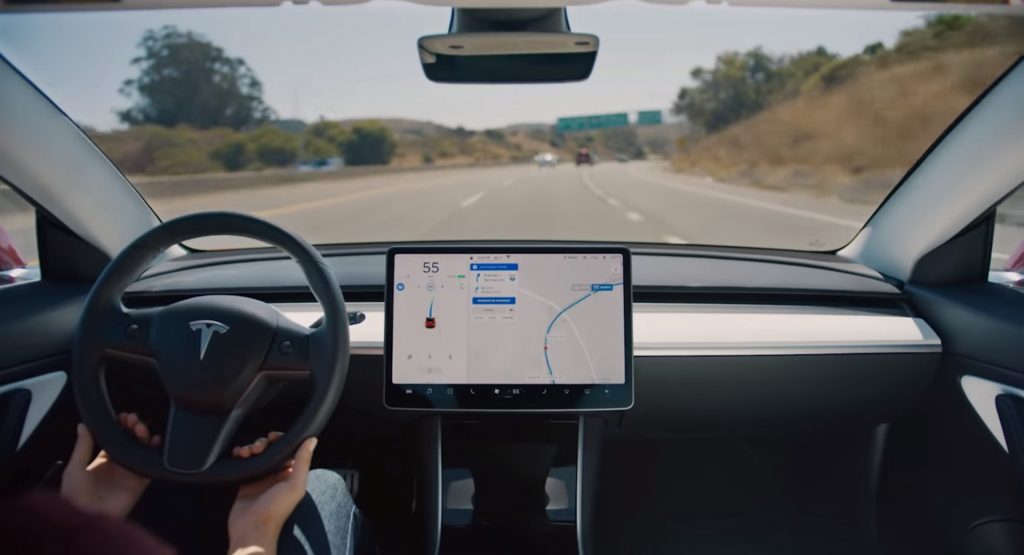Republican Josh Schoemann criticizes Evers, says he’ll ‘outwork’ others in governor’s race

Schoemann spoke at the Dane County Republican’s monthly “Pints and Politics” meeting on Tuesday. (Photo by Baylor Spears/Wisconsin Examiner)
Washington County Executive Josh Schoemann stepped up to the front of a room in the back of Kavanaugh’s Esquire Club on the east side of Madison with a grin and quickly started a chant about Gov. Tony Evers.
“Tony’s got to go. Who’s with me?” Schoemann said about the current second-term Democratic governor. He encouraged others in the room to join him. “Tony’s gotta go… Tony’s gotta go. I’d like him to hear it if you don’t mind.”
The crowd of about 30 clapped enthusiastically and slowly started to pick up the chant.
Schoemann, who wore a red UW-Madison quarter zip up, jeans and a camo hat with his campaign logo across the front, was at the restaurant for the Dane County Republican’s monthly “Pints and Politics” meeting. It’s the one of the latest stops for Schoemann, who is the first candidate of either major party to launch his campaign in the 2026 governor’s race.
Evers’ decision on whether he will seek a third term is still up in the air. He recently told WisEye that he is “not spending very much time at all thinking about whether I’m going to run or not.”
Getting a head start
With about 14 months before a Republican primary might be held, Schoemann is working to get a head start on other potential candidates. U.S. Rep. Tom Tiffany, who is mulling a run for the office, was critical of Evers as he addressed party members at the state GOP’s annual convention. Bill Berrien, a Whitefish Bay businessman and Navy SEAL veteran, recently formed a political action committee.
Schoemann said that it’s “entirely possible” for Wisconsin to be more competitive for Republicans. He launches his campaign as the Republican Party of Wisconsin is reevaluating how to win after their preferred candidate lost in the state Supreme Court race and as Democrats have won 12 of the last 15 statewide elections.
Schoemann sought to start his “Tony” chant a couple times as he spoke to the group — at one point telling attendees that he is the son of a Lutheran Minister and “can’t handle a congregation unless they join with me.” The crowd joined the chant more quickly this time, but Schoemann cut it off quickly as he pulled his camo hat off and placed it over his heart and encouraged attendees to stand up to sing “My Country, ‘Tis of Thee” with him.
Schoemann has worked in Washington County as the elected county executive for the last five years and as the county administrator for six years prior. He owns a farm in the town of Trenton, located between West Bend and Grafton, with his wife and is the father of two.
Schoemann told attendees that he joined the Army National Guard, attended UW-Whitewater and then served in Iraq in 2003. Throughout the event, Schoemann returned to his faith and military service, telling the crowd that “love your neighbor” has been central to his work and will be central to his campaign.
“It’s changed the trajectory of my life permanently,” Schoemann said, describing a memory of his time in Iraq when he gave bottles of water to a child who was drinking from a puddle.
“As he approaches the puddle, I’m thinking, ‘Oh, he’s just going to jump around in the puddle and play.’ He kneels down, and starts cupping his hands and starts drinking out of that puddle,” Schoemann said.
“When I came back home, that moment kept coming back to me over and over and over, and I dedicated the rest of my life to the service and sacrifice of the guys and gals who didn’t come home, either in whole or in part, and of my Lord, Jesus, by loving my neighbor,” he continued, “ and that, ladies and gentlemen, is how we are going to win this election. We are going to turn Wisconsin red by loving our neighborhood.”
Rush Limbaugh and Ronald Reagan
Schoemann said he grew up a “Rush Limbaugh” and “Ronald Reagan baby” — with beliefs in smaller government, lower taxes and strong defense — and that those ideas have shaped his service in local government.
Schoemann repeatedly criticized Evers and spoke about his record.
“Under the education governor, are your schools better than they were six years ago?” Schoemann asked, with answers of ‘no’ coming from some in the room. “He’s filling potholes right now — getting his picture taken in every community can get to… Are your roads really all that much better than they were six years ago? No, no. They’re not, and if you look across the state of Wisconsin on every issue issue after issue, things aren’t better.”
Evers has been traveling across the state last week helping fill potholes as a part of an annual effort to call attention to the issue of improving the roads and his recent budget proposal of to dedicate funds for that purpose — though Republicans have removed that from the budget. At one stop on his trip, Evers told reporters that he didn’t know much about Schoemann but thinks he’s “gonna have to be another Donald Trump.”
“That’s the only way Republicans can kind of move forward in this day and age,” Evers said, according to WSAW-TV 7.
Schoemann said that he decided to run because he is “sick and tired of our kids, leaving the state for other opportunities in different states and not coming back” and “sick and tired of our retirees leaving this state that has become a complete tax hell.”
Schoemann also compared himself to former Republican Gov. Tommy Thompson.
“Back when I was a kid in 1986, Tommy Thompson took out another Tony — [former Gov.] Tony Earl. A young, energetic Republican did very, very well in Dane County, and eventually by 1994, I believe he won Dane County,” said Schoemann, who is 43.
Goal: Lose by less in Dane County
Thompson is the last Wisconsin governor to win a third term in office, and Schoemann wants to ensure that stays true by taking a page out of Thompson’s playbook. Schoemann said he would have three rules for his campaign: go to the Northwoods, go to Milwaukee and go to Dane County. He said that since his campaign launched he had visited Florence County to talk with a group of people, who, he said, likely “hadn’t seen a statewide elected official in decades,” had been on the radio in Milwaukee and his Tuesday evening stop in Madison was his second already.
Schoemann said Republicans need to lose by less in Dane County, pointing out that President Donald Trump won the state of Wisconsin with nearly 23% of the vote in the deep blue county.
“We’ve got to be pushing back towards 26, 27, 28[%], and we’re only going to do it by having conversations with our neighbors and physically being present,” Schoemann said. “I can tell you you’re going to get sick of seeing me because I will be back again and again and again. I want to hear from you what this state needs to be. I want to hear from you what direction the state needs to go.”
Schoemann then took questions from the audience.
One attendee asked about what he would do about property taxes. Local communities across the state have been strapped for funds in recent years due to restrictions in the ways that they can raise revenue with many turning to raising property taxes through referendums to help afford services.
“How many of you live in the city of Madison? How are you liking that new referendum for the school district and the city — one-two punch?” Schoemann replied. He added that property tax rates in Washington Co. are low because of decisions he’s made. He said that at times when they have “considered alternatives where we needed additional resources, we go to the people and ask.”
The county went to referendum in 2024 to help prevent cuts to its public safety services. While the referendum failed, a deal on shared revenue and a local sales tax for Milwaukee that lawmakers and Gov. Tony Evers made helped the county avoid the cuts.
That deal led to a back and forth over social media between Schoemann and Milwaukee Mayor Cavalier Johnson after Schoemann took a jab at the city because of the tax. Milwaukee leaders were prominent advocates in helping secure the state funding, which has helped communities across the state, including Washington County.
Banning ‘Democracy in the Park,’ encouraging early voting
In response to a question about elections, Schoemann said that he believes in purging voter rolls, banning voting events including ‘Democracy in the Park” — a COVID-era effort held by the city of Madison where poll workers picked up absentee ballots from voters who dropped them off — and having “significant election integrity” measures. He also talked about promoting early voting in more rural areas.
“The clerks are part time, most of them work out of their houses. They don’t have an office at the town hall… In those places. If you want to have in-person absentee voting, you have to schedule an appointment at the home of the clerk. In Madison and in Milwaukee… the convenience level is through the roof right now,” Schoemann said. “It’s not quite seven days a week, 24 hours a day for those 13 days, but it isn’t far either, especially as compared to those towns.”
Schoemann said his county sought to incentivize local municipal workers to add in-person absentee voting days and times by paying them 150% of the cost. He said the state needs to “completely transform how we think about elections in Wisconsin.”
Schoemann segued to criticizing Evers for his relationship with lawmakers and the number of bills he has vetoed, saying changes in law need to come as the result of the governor working as a “coequal” branch with the Legislature. He said that the governor should work with bills before outright vetoing them.
“The fact that this governor doesn’t have the leadership capability to walk down the hallway and talk to legislative leaders is an embarrassment to our state,” Schoemann said, referring to communication difficulties between lawmakers and Evers, who are currently negotiating the next state budget.
Schoemann said that he wouldn’t want to “throw money” to help address education problems, though he thinks the system currently in place is outdated. He also said that he would seek to help change the veto power that governors have.
This will be the first time Schoemann runs in a statewide election. He promised the room that no one would “outwork” him.
“There might be more money. There might be worse press, there might be all kinds of things, but no one will outwork me,” Schoemann said.
In the weeks before deciding to run, Schoemann told the room that he asked his wife if she was sure she wanted him to run.
“You know what she said to me?” Schoemann asked. “‘Well, can’t be worse than Iraq.’”
GET THE MORNING HEADLINES.























